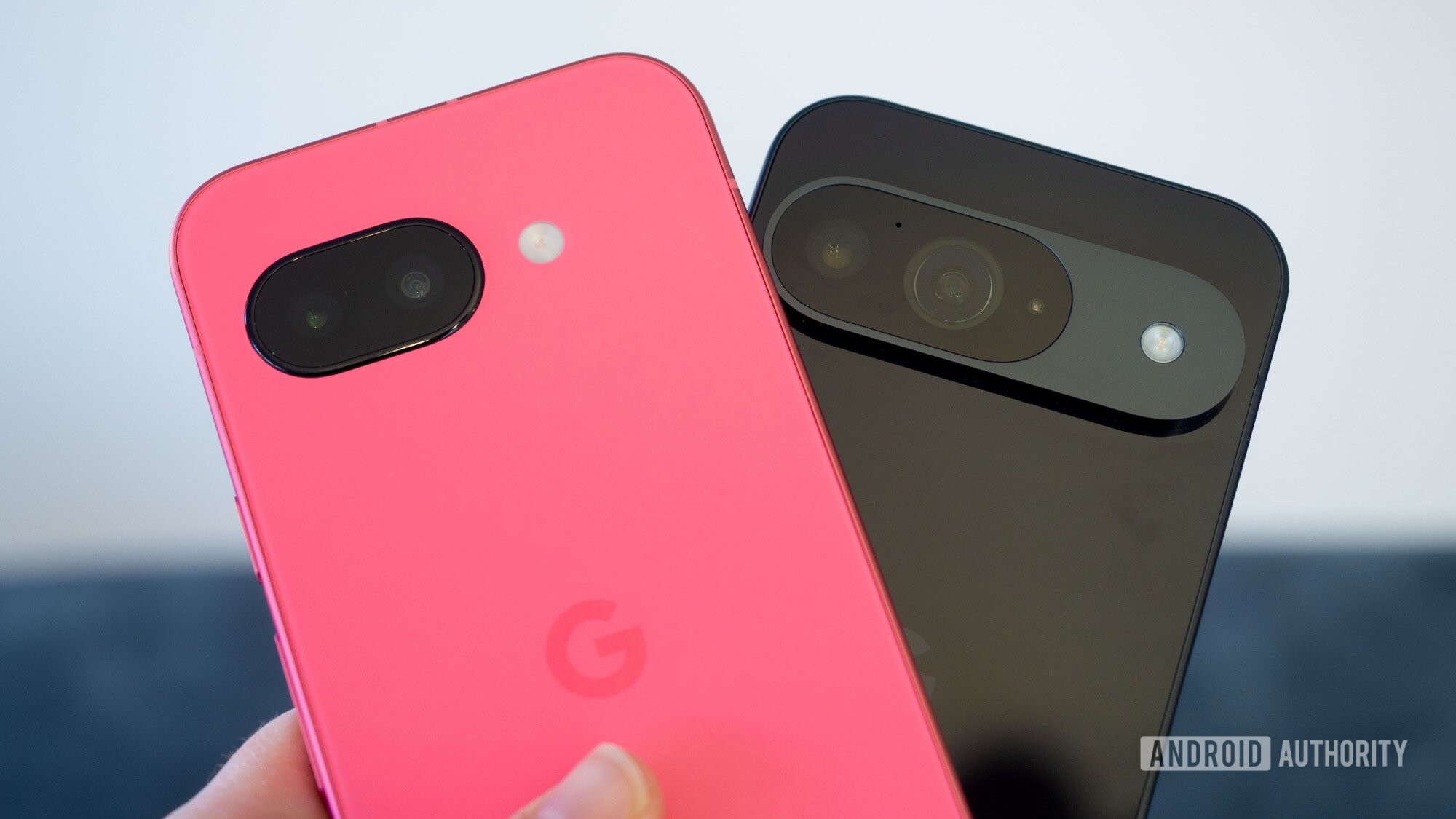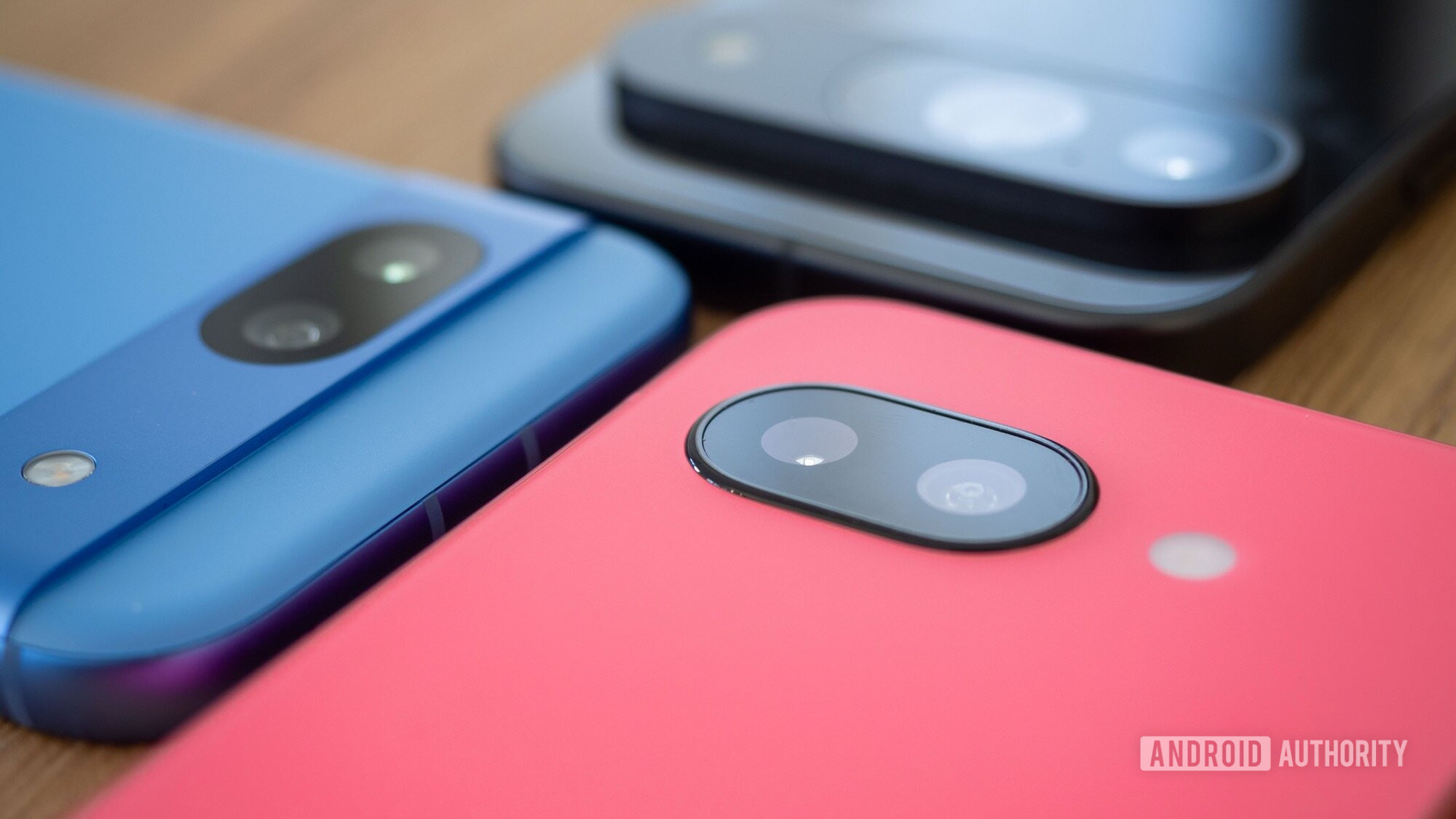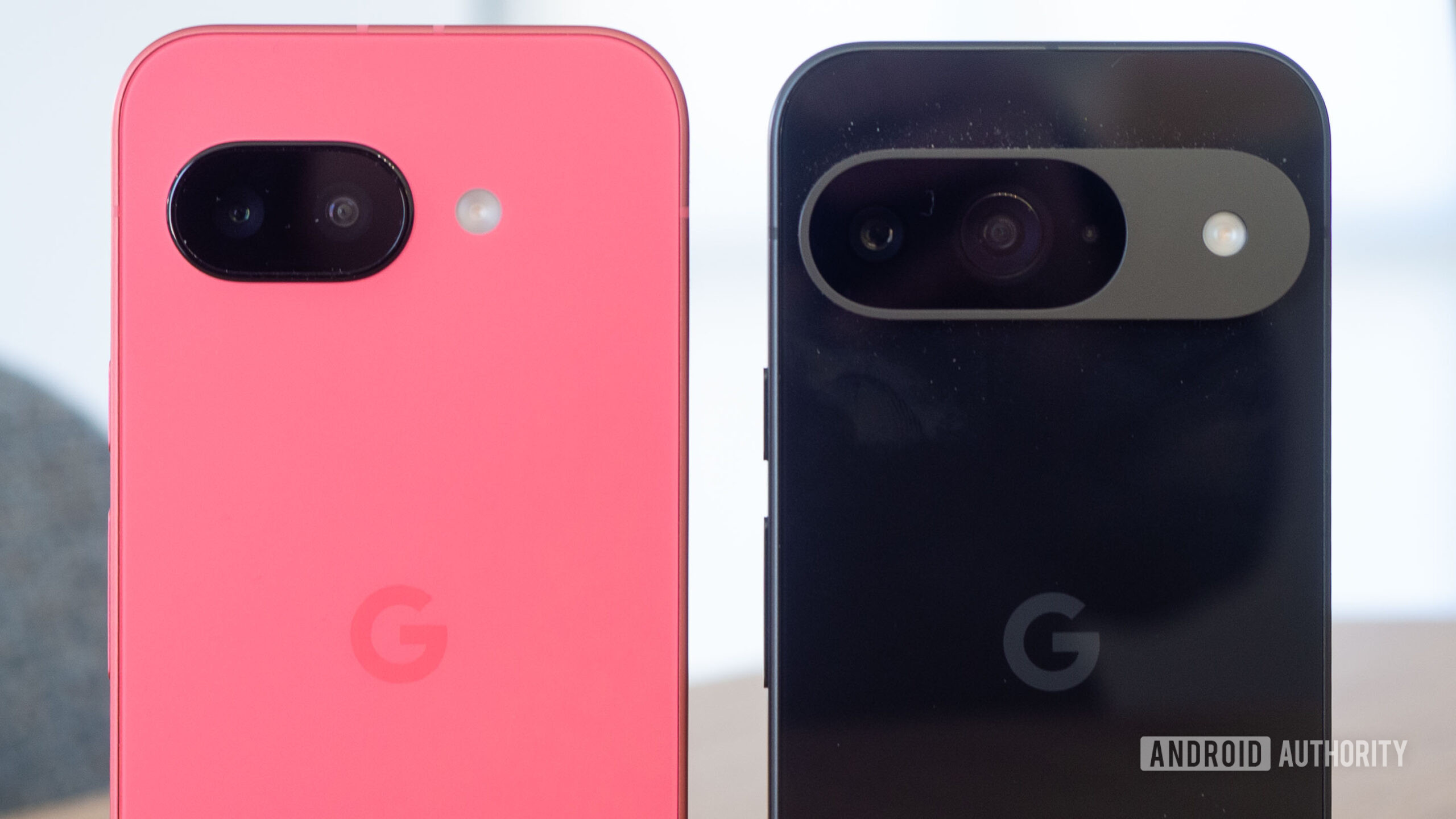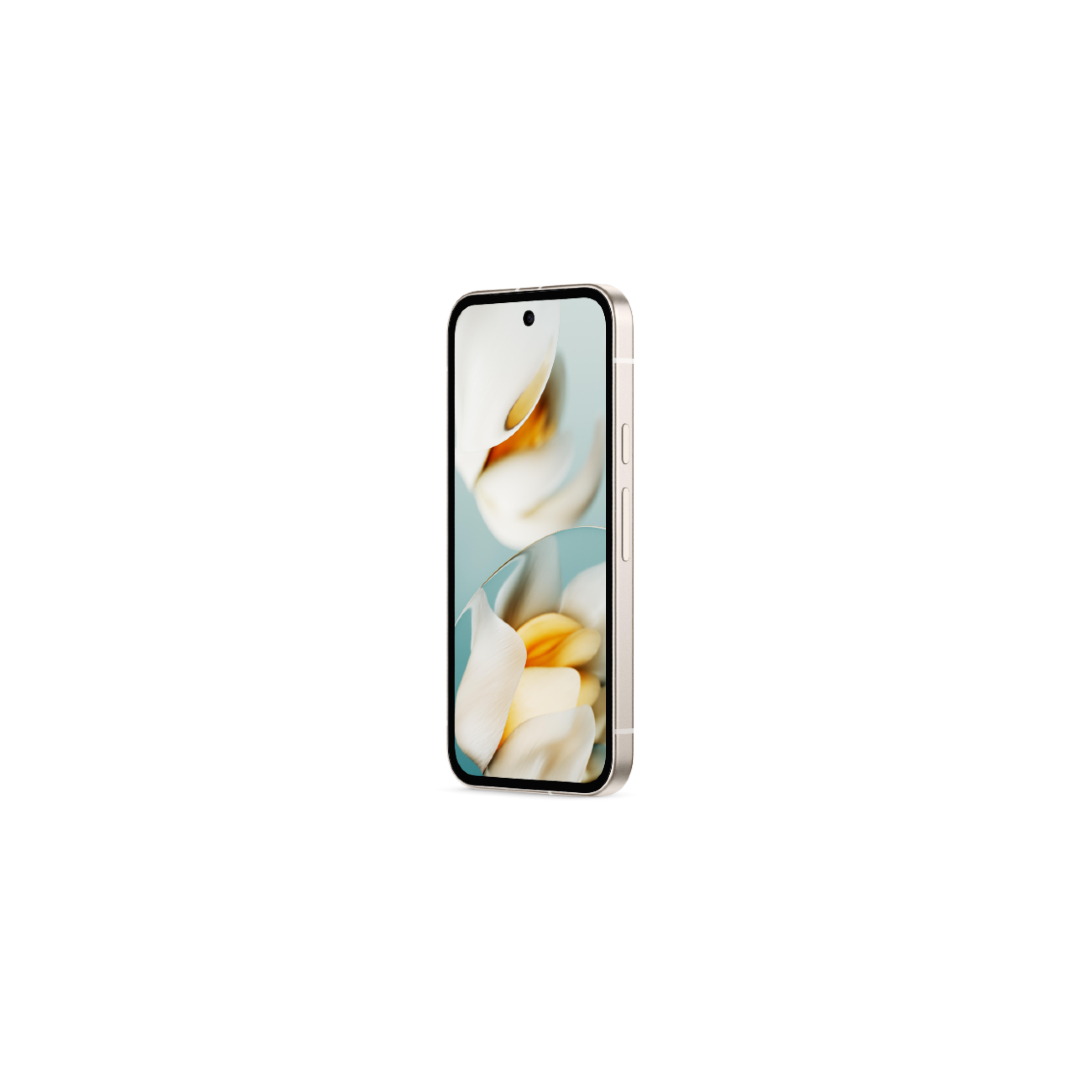When the first renders of the Pixel 9a leaked, I had a very negative gut reaction to the phone’s design. It looked cheap, it lacked personality, and I thought Google had ruined one of its Pixel line’s most iconic design features — the camera bump. Going for a nondescript flat camera module seemed to reduce the Pixel 9a to a generic-looking budget Android phone, not a unique one filled with Google’s personality and its camera and AI wizardry.
I wasn’t too excited about testing the phone, but when it dropped at my doorstep and I unboxed that eco-friendly cardboard, I was a little stunned. Maybe it’s the flashy — really flashy — “Peony” fuchsia-pink color, maybe it’s the aluminum frame with flat edges, but the Pixel 9a looks anything but cheap. And now that I know why exactly Google went for this design, I am much more inclined to look at it positively.
The Pixel 9a looks dashing, and Google’s approach to minimalism lands on just the right side of “good.” I have flashbacks of the Pixel 5 in my head while looking at it — a big compliment if you ask me.
Which design do you prefer: Pixel 8a or Pixel 9a?
289 votes
There’s something Pixel 5-like about this Pixel 9a
Rita El Khoury / Android Authority
I’m not sure what exactly appeals to me about the Pixel 9a. Objectively speaking, it’s a very simple phone. An aluminum frame, front glass with large bezels around the display (larger than most modern phones, at least), and a back plate with a small oval cutout for the two cameras. On paper, there isn’t anything special going on with it.
In reality, though, it reminds me a lot of my beloved Pixel 5 — unassuming flat camera bump and all. It’s a simple phone, simply designed, not trying to be more than it is or punching above its weight. There are no unnecessary flourishes around the cameras, no extra buttons, no weird materials, and no bulky or unexpected bumps.

Rita El Khoury / Android Authority
It doesn’t try to impress, unlike the Pixel 8a, which always looked like it was trying to oversell and over-flex its medium camera setup to me. Those two cameras hardly required such a show-offy bump. Besides, it’s not like the camera bar was universally loved; our comment section is filled with just as many people who dislike it as those who like it.
The Pixel 9a is a simply designed phone, not trying to be more than it is or punching above its weight — quite like the Pixel 5.
It helps that the 9a doesn’t feel like a slippery rounded pebble in my hand, either, but instead gives off a solid and hefty impression. The flat sides, back panel, and front glass are obvious reminders of the Pixel 9 series, or the other elephant in the room — the iPhone. But now that I know why exactly modern phones are moving to this flat sandwich design, I don’t look down on it as much anymore.
I’d rather have a phone that’s easier to repair, front and back, and is paving the way toward the European Union’s upcoming requirements around replaceable batteries, than a marvelous and unique design that won’t stand the test of time and can’t be easily repaired. Google’s approach, while seemingly “copying Apple,” is just doing what makes the most sense to be ready to answer those rigorous requirements come August 2026.

Rita El Khoury / Android Authority
Of course, there are still times when I look at the Pixel 9a and think that I miss the camera bump. In the past few years, I’ve recognized dozens and dozens of Pixels around me in the metro, on the street, at restaurants, or around attractions, thanks to that iconic camera bar. Just last week, when the game master at the end of an escape room offered to snap a photo, he pulled out his phone, and I immediately flagged the Pixel 7 even though it was in a case.
Would I recognize the Pixel 9a if it were in a case? Probably not. Or, at the very least, it would take a bit more scrutiny and some getting used to in order to start associating Google with this new flat-camera design. And that’s the biggest downside to this whole look. Google worked hard to build phones that look different, that attract the eye because of their distinctive camera visor, and now that’s gone for the A series. From now on, these phones will have to forge their own identity, and they have a bigger uphill battle than flagship Pixels.
The advantages of a flatter design

Rita El Khoury / Android Authority
At first, I thought Google had bulged the entire phone up, engulfing the camera module to make room for the bigger 5,100mAh battery. But that’s not the case. The Pixel 9a has the exact same 8.9mm thickness as the Pixel 8a without its camera bump. So Google didn’t take a shortcut to fit in the larger battery. It really shrunk everything down, instead.
If you listen to the Made by Google podcast’s Pixel 9a episode (warning: YouTube link), you’ll hear Director of Product Management for the phone, Soniya Jobanputra, explain around the minute-six mark how Google was able to achieve that. It took switching to a thinner, lighter plastic OLED display instead of the thicker, heavier glass OLED. And if you think that sounds like a downgrade, quite the opposite: plastic OLED is higher-end, more flexible and durable, and can be found on the flagship Pixel 9 series. Google also had to make room in the budget for that upgrade.
So, technically, I can’t chalk the improved battery life as a perk of this design. It would’ve happened whether the camera bump was flush or not. No, the real benefits, I think, are that there’s less fragility around the camera visor, and it’s so much easier to clean.
The camera is less fragile, the phone lies flat, and there’s less dust to clean; all great benefits.
No more worrying about that protruding camera bar and no more concern about the glass’ durability there. It’s a feeling I haven’t had since I gave up the Pixel 5 as my daily driver and upgraded to the Pixel 6 Pro. Plus, any case should have a lip to surround and further protect the camera. It doesn’t hurt to have a phone that lies flat on a table, either. The number of times my Pixel 8a slipped and slipped until it fell on the floor is… well, let’s just say more than you can count on two hands.
Not having to deal with dust around the camera bump is another big benefit. You may look at the photos above and think, “What dust?” What you don’t know, if you haven’t used a Pixel with a camera bump before, is the ridiculous amount of dust particles that magically gather around the camera and cling to it. I have to do a lot of cleaning in Lightroom to make those photos presentable, so here’s an unedited photo of the dust for you. Notice how it’s everywhere around the Pixel 9’s camera, while there’s very, very little on the Pixel 9a. Yup.

Rita El Khoury / Android Authority
Look, I’m not going to claim this is the best phone in the Pixel series. I love my zoom lenses, 16GB of RAM, and faster charging way too much to give them up. But there’s something quite simple and special about the Pixel 9a; it’s a phone built to be used, not to be strutted around, and I appreciate that.
For all I know, I could just be falling for the flashy pink color. Maybe if I saw it in white or black, I wouldn’t have the same opinion. But I really think the minimalist design is also growing on me. My colleague Joe Maring saw sense before I did; he was convinced by the Pixel 9a’s looks before the phone even launched. Although I disagreed with him staunchly over the last few weeks, I’m a grown woman, and I admit I was wrong. This is a damn fine phone, and at $499, with a high-end Tensor G4 processor and a larger 5,100mAh battery? You wouldn’t regret the money spent on it. I just wish it had more RAM for better future-proofing for years to come.

Google Pixel 9a
Built-in Gemini • Incredible camera • All-day battery
All the Pixel essentials for less.
The Google Pixel 9a brings built-in Gemini, an incredible camera, all-day battery, and seven years of updates for under $500.







